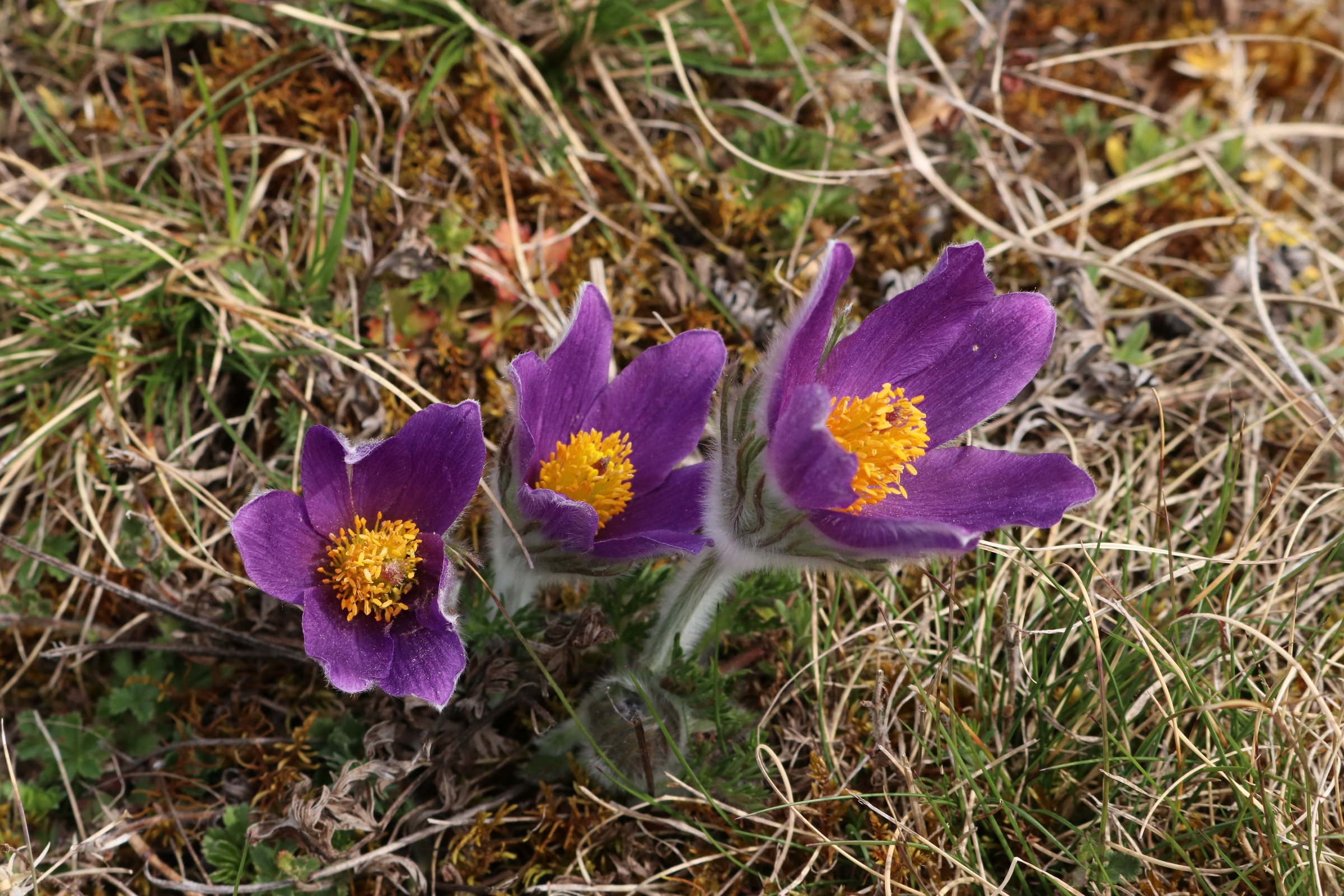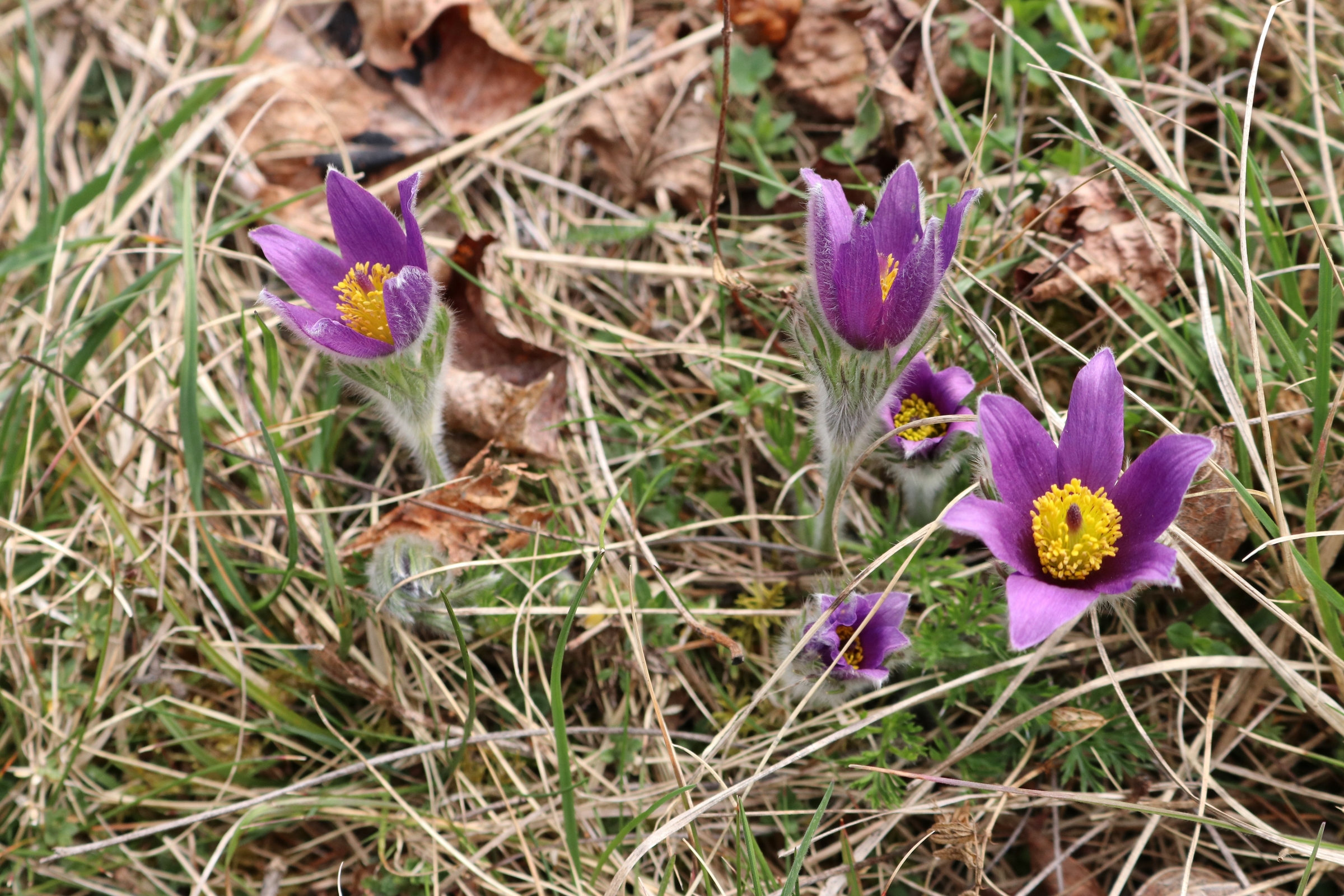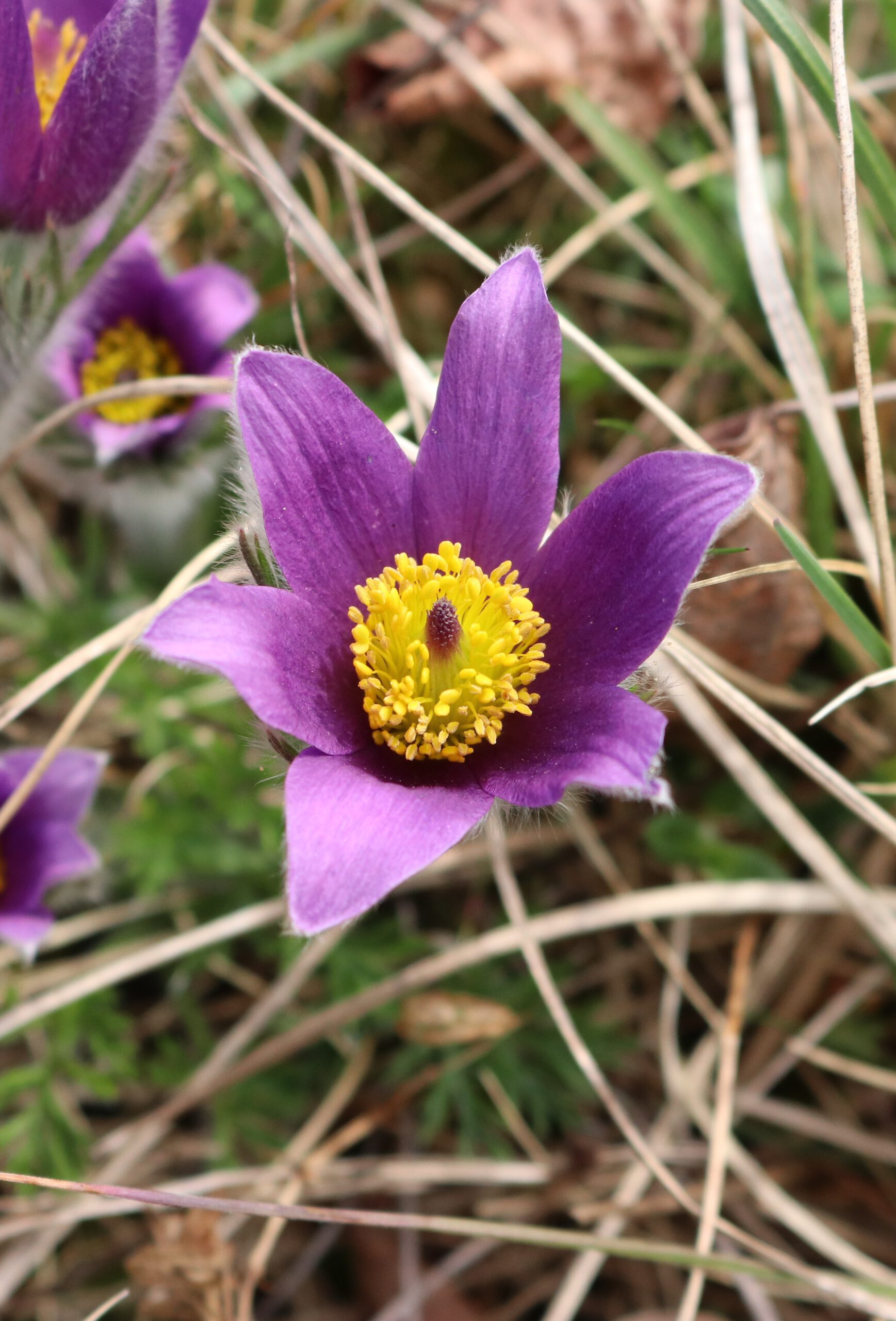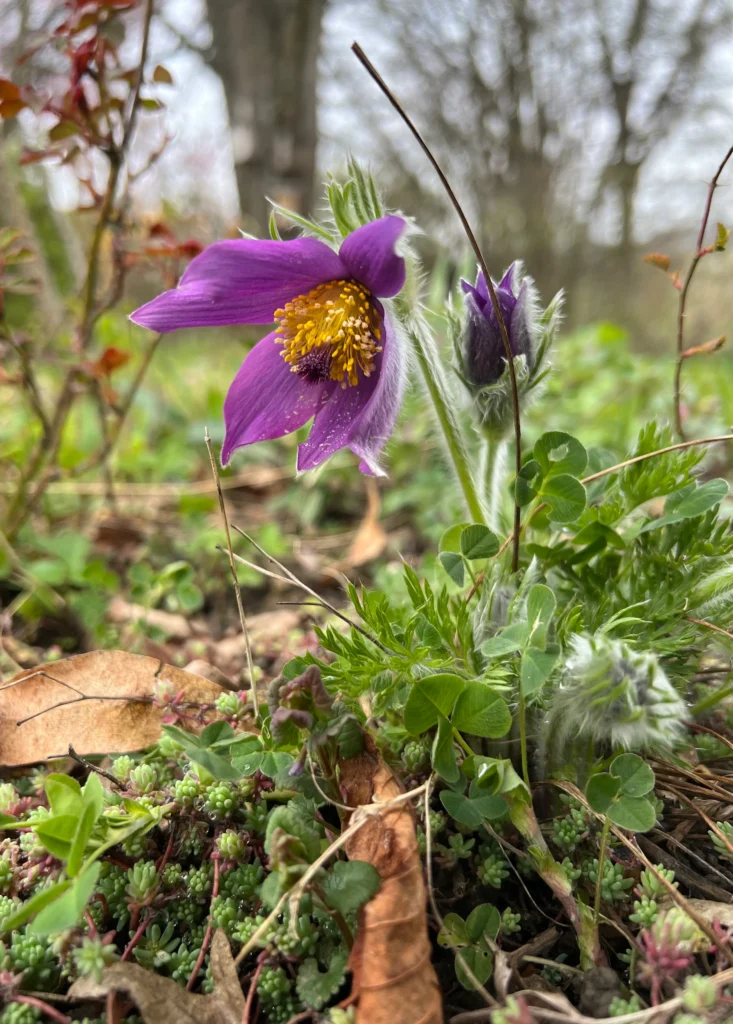A native mountain resident, the “common cowbell / common pasqueflower” (Pulsatilla vulgaris).





~ Weak poisionous plant ~
Occurrence and distribution: The common pasqueflower grows mainly on nutrient-poor grasslands / dry grasslands, bushes and on heaths. It prefers warm, calcareous soils such as those found in the Swabian Alb. Partly there are varieties, which are planted as ornamental plants in our gardens. The plant is widespread throughout Western and Central Europe.
Plant description
Growth habit: The common pasqueflower is a perennial herbaceous plant, which very often forms small groups. The plant reaches a height of 5 – 25 cm.
Stem: The solitary stems are unbranched and have a distinct hairy surface. The flowers are located at the top of the stem.
Leaves: The leaves at the base are slightly hairy and develop during flowering. The leaves consist of pinnately linear leaflets. Per leaf can be up to 100 individual leaflets. They are light green to gray-green in colour. The leaves reach a length of up to 10 cm. The ends of the leaves taper to a point. The green colored whorls of bracts have silvery hairs and are located directly under the flower. Rarely the hairs can have a yellow tint.
Flower: The perianth is radiate-bell shaped and is blue-violet in colour. The flowers are 5 cm to 13 cm wide. They consist of six petals, which are all the same size. Inside the flower sits the purple pistil and the yellow ovary. The stamens growing around the pistils are yellow in color. The flowers sit upright on the stems. In bad weather, the flowers close and lower to the ground. The flowering period is from March to May.
Fruit: The fruit consists of a gray-brown 2-5 cm long nut with a hairy spine at its end.
Poisonous plant – tips for handling the plant
Poisonousness of the plant: The common pasqueflower is poisonous in all parts of the plant. However, it is usually avoided by goats and other grazing animals. Gloves should be worn when removing parts of the plant. The plant is used to some extent in homeopathy. However, I advise against self-medication or use of the plant. Due to the toxins it contains, it is poisonous to humans! The poison can accumulate in animals, especially in the liver.
Ingredients: The fresh parts of the plant contain the weak poison protoanemonin.
Symptoms of poisoning: In case of poisoning with “protoanemonin”, cramps and paralysis may occur. Poisoning is sometimes also manifested by vomiting and dizziness. In the worst case, respiratory paralysis and death may occur.
Folk names & origin of names
Folk Names: In old literature, the plant is listed under various popular names. These include “kitchen pasqueflower (Küchenschelle), cuckoo pasque, sleeping flower, Easter flower, windflower, bell-windflower, or wolf’s paw.”
German epithet “Küchenschelle (kitchen pasqueflower)” is derived from old German and is derived from the original word “Küh-chenschelle”, as a diminutive form of cow. The botanist Tabern explains this in the „memoranda of the Imperial Academy of Sciences“. The common word “Küchenschelle” is an incorrect form, since the plant has no application in the kitchen. „Osterschelle“ (easter bell flower) indicates the flowering time at Easter and also the bell shape.
The botanist Leonhart Fuchs* called the plant “Kuchenschell” in his “Kreüterbuch”. As to the meaning he states: “darumb das seine blumen den schellen oder cimbaln gleich seind”. He already compares the flowers with bells / bells.
In addition, the plant still has largely unknown names such as “Beizkraut“ (pickling herb) (botanist Frane), because the root gives a green ink. This was also used to dye Easter eggs in the past. Due to its shaggy appearance it was given the name “Wildenmannskraut” by Reuss.
The botanist Schmeller gave it the name “Schlottenblume”. He justified this with a resemblance to a coarse canvas (probably due to the rough hairs).
The name “day sleep” or also “sleep flower” originated from the characteristic that the flower nods even in full sunshine.
Origin of name: The botanic genus name “Pulsatilla” can be derived from the Latin word “pulsare” – in english: to beat, to ring. This is also the origin of the name “bell”. The species name “vulgaris” is derived from “common, everyday”.
Endangerment of the plant
Endangerment of the plant: Collecting the plant in the wild is strictly forbidden! They are under special protection by the Federal Species Protection Ordinance (BArtSchV). According to this, the plant is also considered a strictly protected species. Thus, it must not be picked or dug up under any circumstances! The wild common pasqueflower is classified as endangered in the whole of Germany. Nevertheless, in individual federal states other endangerment levels are defined as follows:
- Germany: endangered (status: 3)
- Baden-Wuerttemberg: endangered (status: 3)
- Bavaria: endangered (status: 3)
- Berlin: species extinct (status: 0 – since 1856)
- Brandenburg: endangered (status: 1)
- Hamburg: species extinct (status: 0 – since 1945)
- Hesse: endangered (status: 3)
- Mecklenburg-Western Pomerania: endangered (status: *)
- Lower Saxony: species extinct / critically endangered (status: 0 – upland / 2 – lowland)
- North Rhine-Westphalia: endangered (status: 3)
- Rhineland-Palatinate: endangered (status: 3)
- Saarland: species extinct (status: 0)
- Saxony-Anhalt: critically endangered (status: 2)
- Saxony: endangered (status: 1)
- Schleswig-Holstein: endangered (status: 1)
- Thuringia: endangered (status: 3)
Distribution codes: AV, M1, M2, F
Leonhart Fuchs (* January 17, 1501 in Wemding near Donauwörth; † May 10, 1566 in Tübingen)